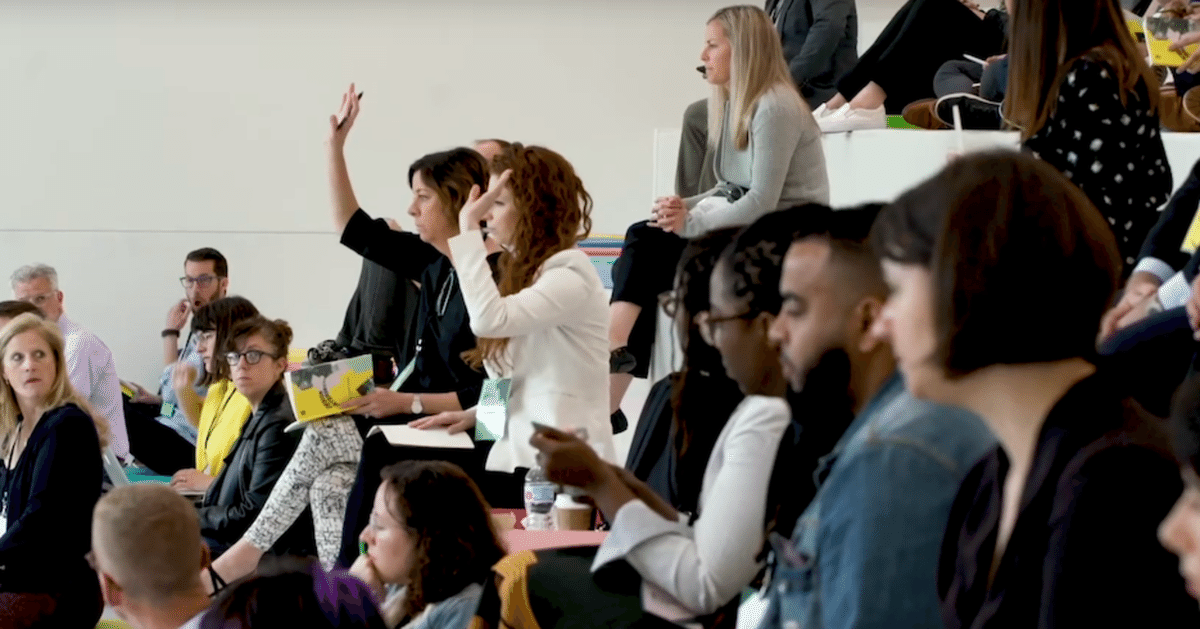
デザインスクールの履修科目 (2020春学期後半)
USでコロナ非常事態宣言が発令された3月中旬から、ID (イリノイ工科大学デザインスクール)の授業は全てオンラインに移行されました。もう既に5月となり、この2ヶ月間全く備忘ログの記録ができませんでした、忙し過ぎて。。
オンラインに移行してから気づいたのは、私は人とのとりとめもない会話や相談から、情報収集や意思決定を助けられているということです。オンラインになって、逆に集中できるようになった効率が上がったという人もいますが、私は逆のタイプのようです。人と様々なエナジーの交換ができないことで煮詰まることが多くなり、作業効率があまり良くはなかったです。
あと、オンラインで英語を聞き続けることで脳が非常に疲れます。結果的に睡眠時間が増えている気がしています。(まぁ、睡眠は大切ですが。) 初期の頃は音声が聞こえにくいのでイヤホンを使っていたのですが、情報をインプットし過ぎることで疲労が蓄積し体調を崩してしまったので、途中からはイヤホンは使わないようにして、聞き流すことでストレスマネジメントを行いました。あと、やっぱり27インチモニターを買ってよかった。これでノートPCをずっと覗き込んでたら本当にやばいです。

さて、やっと春学期後半の履修科目を備忘しておきたいと思います。後半も6科目を履修し自己のキャパとのせめぎ合いとなりました。少しでも気を抜くと確実に溺れます。少しでも他の授業で作った資料やチャートを別の授業で有効活用しながら、ジャグリングして行きます。
① Modes of Human Experience (人の経験価値について *必修)
Human-centered Design (HCD) の基礎である、人の経験価値 (経験したことの解釈) を形成する知覚について学ぶクラスです。5つのディメンションで構成されているのですが、この5つはさらにサブディメンションに分割され具体的な事例とともにレクチャーがあります。アカデミックなので非常に細かいですが、実務で網羅性や欠いている視点をチェックするのに役立つという印象です。(マーケティングの経験者は既に知っている内容かと思われます。)

ご参考: Course Overview
"User Centeredness" is an understanding of a complex and wide range of influences that affect how people respond to the designed world. This course introduces students to the principles and surrounding factors of the human experience and how to incorporate these perspectives into their work. Combined physical, cognitive, social, cultural, and emotional factors comprise the totality of the human experience and thus are central concerns to fully understand and become "user centered".
② Facilitation Methods (ファシリテーションの技術)
1年デザインスクールで勉強をしてきましたが、ファシリテーションの技術は、デザインスキルの中核を担う役割をもっているのではないかと理解しています。正解の見えない曖昧模糊な旅の中、コンパスを示しながらパーティ(仲間)の知恵を集結し導いていく技術です。これからの時代、もはや地図は無いのです、コンパスだけが頼りです。新しい時代のマネジメントやリダーシップの在り方としても重要なのではないかと考えています。

参考: Course Overview
Facilitation is the unspoken, untaught skill that can make all the difference in your ability to lead others through routine as well as more complex, adaptive challenges. In this class you will become a more adept, agile and attuned facilitator through hands-on practice and exposure to facilitation principles, processes and techniques.
③ Critical Contexts (批評的な関係性考察)
このクラスは個人的に非常に興味深く、社会・モノ・生物と人間の関係性をゼロベースで考えさせられる内容です。社会学など領域横断のアカデミックな論文を読んでのディスカッションがメインなので、ノンネイティブには非常に難解です。西洋思想で書かれているものが多く、東洋思想からすると受け入れ易いアニミズム(生物・無機物を問わないすべてのものの中に霊魂、もしくは霊が宿っているという考え方)の感覚などについて発言するとなぜか非常に喜ばれました。。また特に興味深いのは、前述①のHuman-centered Design (HCD) の限界についてです。下図にあるように、人の認知というものは自分の身近にある環境に適応していて非常に盲目的なのです。なので、人間中心のデザイン思考だけでは足りないという最近の議論も、当然生まれてくるのです。

ご参考: Course Overview
The world is in flux. Everything must be re-designed. This course will survey a selection of theories, ideas and concepts that form the basis for understanding ourselves, the category of “the human” and the world that we live in. Currently, many aspects of human experience are being reconsidered through emergent notions of the posthuman and the more-than-human. Designers must be challenged to think and design in new, hybrid and relational ways in order to design for these futures. This class will address themes such as materiality, temporality and power as well as categories such as gender, race, class, disability, sexuality, decoloniality and the multispecies. As design moves away from traditional domains such as images and objects, and towards the design of socio-technical systems, it is essential that designers build a rich vocabulary to discuss these complex relationships.
④ Strategies for Open Innovation (オープンイノベーション戦略)
教授の説によると、人のアイデアというものは既に世の中に出尽くしていて、新しいアイデアはそれらの組み合わせにしか過ぎないとのことです。個人的に、そんなこと言ってたら浪漫が無いではないかと思うのですが、このクラスでは世の中に存在している人の集合知を、いかに活用し新しいアイデア創出に導くかの手法について学びます。(Knowlege Brokering と呼ばれています。) 特に、独自性の強いカルチャーを持つ企業や組織においては、組織外のナレッジをいかに柔軟に取り込み、組織内のイノベーションに結びつけることができるかのナレッジブローカー機能が、持続的進化のための鍵を握っていると思われます。
デザイン思考のケイパビリティが、このナレッジブローカー機能であるのことが、昨今注目されている理由の一つなのだと思われます。

ご参考: Course Overview
This course teaches design tactics and strategies for integrating in effective ways knowledge distributed across multiple domains. Open innovation systems, which consist of a productive capacity to design complex solutions by integrating large quantities of relevant knowledge distributed across large networks of people has become a dominant process in designing the aspect that shapes contemporary human experiences. This course is for students who are interested in leading and facilitating multi-disciplinary collaborative projects using design as know-how to innovate. Students will learn design tactics and strategies for knowledge brokering through tutorials, examples, practical activities and simulations. Students will develop the competence of knowledge brokering to transform information into ideas with economic, social, cultural, territorial, and environmental value.
⑤ Engaging Stakeholders in Innovation (イノベーションへのステークホルダー巻き込み)
このクラスでは、イノベーションを生み出すために、いかにしてステークホルダー (関係者) を巻き込むことができるかの手法について学びます。英語の "Engage / Engagement" (エンゲージメント) という言葉は非常に便利で、日本語に訳すとまさに "巻き込む" というニュアンスです。ファシリテーションとも目的は少し被りますが、このクラスではよりハイレベルな戦略視点からのアプローチについて議論します。企業や組織のイノベーション課題について現状分析や、課題解決に向けた関係者のエンゲージメント施策立案など実践的な内容です。個人的に印象的だったのは、チームエンゲージメントを強化する仕組みづくりです。情報共有プラットフォーム・ルーティーンルール・エモーショナルコネクションの創出方法など、様々なアイデアが存在していて、日々の仕事にもっと活用するべきだと思いました。


ご参考: Course Overview
This course focuses on the social dynamics of design as an agent of change and innovation, introducing students to simple frameworks to help them get ideas off the ground and gain support within their organizations. As leaders in large organizations wonder where their next big idea will come from, individuals and teams within these organizations wonder how to get their great ideas to gain traction and attention among executives and peers. The void between ideas and sponsorship gets wider and wider the larger and more hierarchical organizations become, and designers usually struggle to get their ideas to “speak for themselves” in the midst of conflicting priorities.
⑥ Service Systems Workshop
春学期の通期で取っている、サービスデザインのクラスです。サービスという概念は、ユーザーの全タッチポイント(カスタマージャーニー) を網羅する上位概念なので、非常に領域が広いです。(個人的にはブランドデザインと同義であると捉えています。) クラスでは5つのチームに別れ、各チームのフォーカス領域でサービスをデザインしていきます。今年のテーマは、Cook County Assessor's Office (CCAO) という、シカゴにある固定資産税務サービスのイノベーションです。(簡単に言うと税務署です。) お役所なので、サービスレベルは高くはなく市民の期待値も低い。私たちのチームは、Appeals(アピール) という、固定資産税額を決める上での査定告知から、不服申し立てまでのプロセスをイノベーションするという課題です。

またこのクラスは、ID (イリノイ工科大学デザインスクール)の中でも、全てのデザインプロセスを実践できる数少ないクラスです。テーマ設定 (Frame) から始まり、フィールドリサーチ (Research)、課題分析 (Analysis)、施策アイデア立案 (Synthesis)、プロトタイピング (Prototype)、プレゼンテーション (Communicate)と非常に大変ですが全デザインプロセスのサイクルを学ぶことができます。

ご参考: Course Overview
Services are increasingly dynamic, interconnected systems that need to be thoughtfully designed and choreographed. Service components can be tangible design elements–graphic, interaction, product, environments–or intangible elements such as roles, organizational structures, and incentives. Designing for services require new approaches and tools that help designers manage complexity throughout the design process.
以上が春学期後半の履修6科目です。冒頭で触れた通り、全てオンラインで実施しており、コラボレーションツール (Mural・Miro などのオンラインホワイトボード)をフル活用してなんとかベストを尽くしているという状況です。またノンネイティブの私にとって、英語の聞き取りは更に大変で、この2ヶ月で英語力は普通以上に鍛えられているのかもしれません、知らんけど。。
(*写真は学校のマイデスク)

